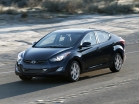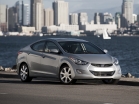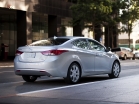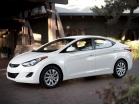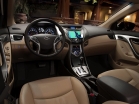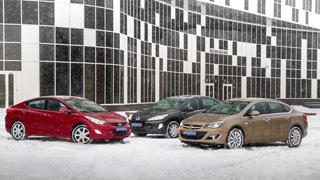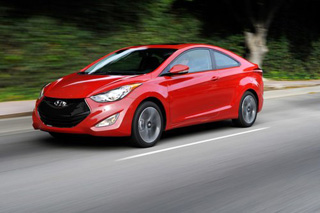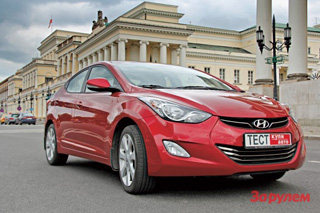Hyundai Elantra sedan test drive since 2010 sedan
Hyundai Elantra. Fitness is power
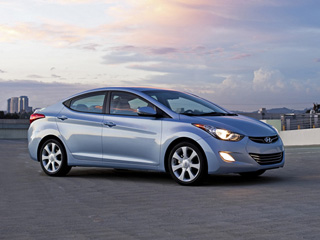 In Hyundai, a radical revaluation of values \u200b\u200boccurred, which resulted in the next generation of Elantra.
In Hyundai, a radical revaluation of values \u200b\u200boccurred, which resulted in the next generation of Elantra. Small sedans can quite rarely boast of a bright appearance, but the former Elantra in this regard was even different from her own: it was very faceless. Fortunately, the Koreans revised her appearance. But the main change was still getting rid of excess weight that appeared in the cars of the previous generation. Now Elantra is a slender and fit beauty, seriously carried away by fitness. And her salon is pleasant. It’s only a shame that, having corrected the appearance, the character of the car left a little village. This is felt both in the cabin and in the habits of the car. In many ways, Elantra orientation to the US market is to blame, where cars love with their eyes, and customers with European preferences are designed by the I30 model, though only in the form of a hatchback. Those who prefer sedans, we will tell what the latest Elantra is.
Portrait
ElanTra of the previous generation car is an unforgettable and faceless, sort of annoying greetings from the era of bio -design. Against its background, the novelty is an exceptionally bright car, perhaps the most beautiful 4-door model of the Hyundai brand today, despite the fact that it fits into the modern branded style of the brand, echoing with Solaris and Sonata models. Compared to tasteless (so I want to say Chinese), the interior of the previous generation car is a real breakthrough: exciting forms, curious symmetry, good ergonomics, and a good assembly quality. Only quite average decoration materials are upset. Like some compensation, a spacious cabin and roomy trunk. On the go, the car is not impressive: the simple design of the rear suspension affects. If driving comfort is still acceptable, then the handling of sleepy, however, most drivers will be enough. Noise insulation is average, but the dynamics are quite worthy.
Choosing a body
There is no alternative for this model, although there is a hatchback, but is called i30 and is distinguished by a style and a fundamentally different rear suspension design, despite the fact that both cars are created on the same platform.

